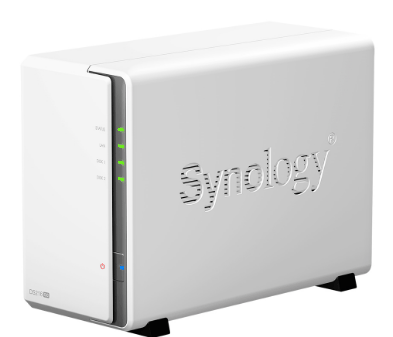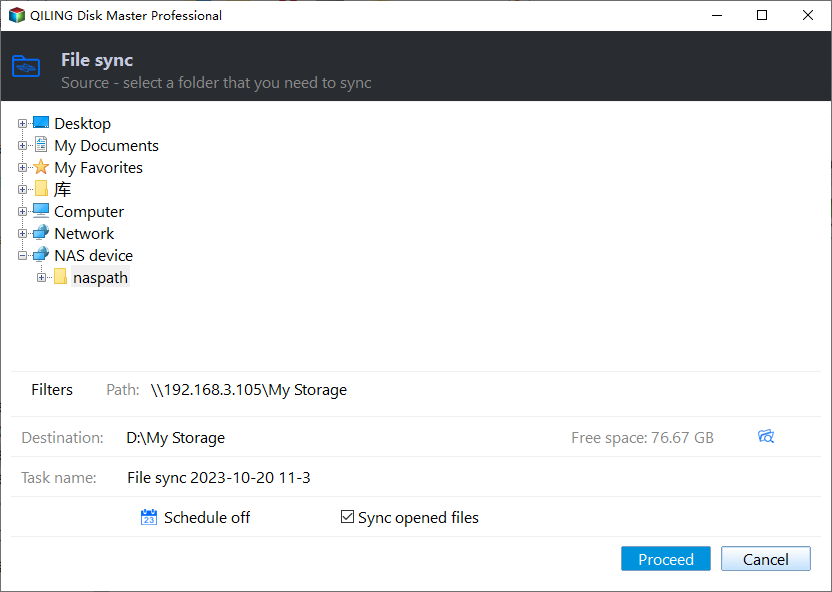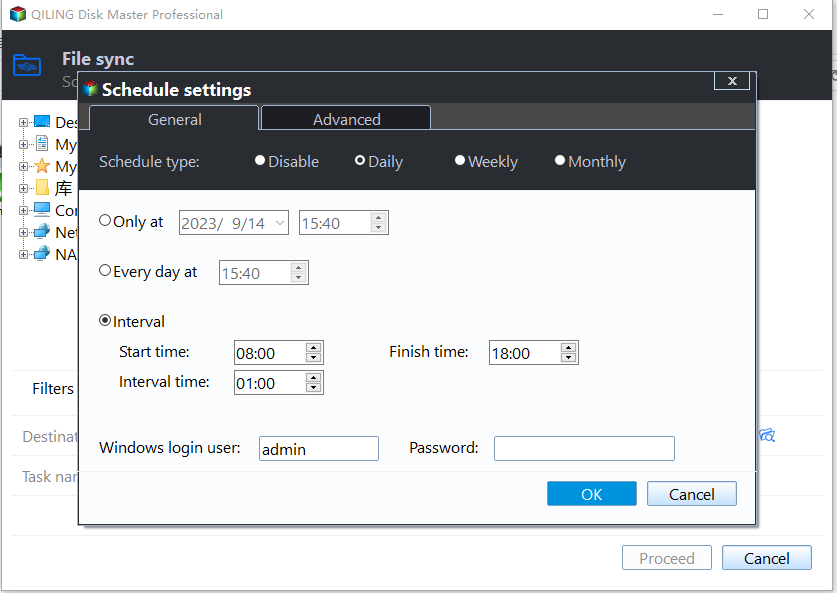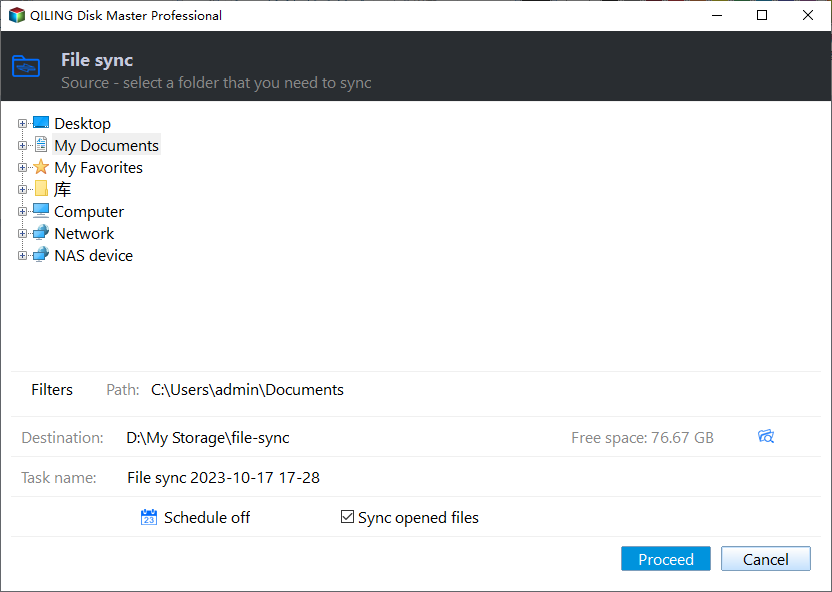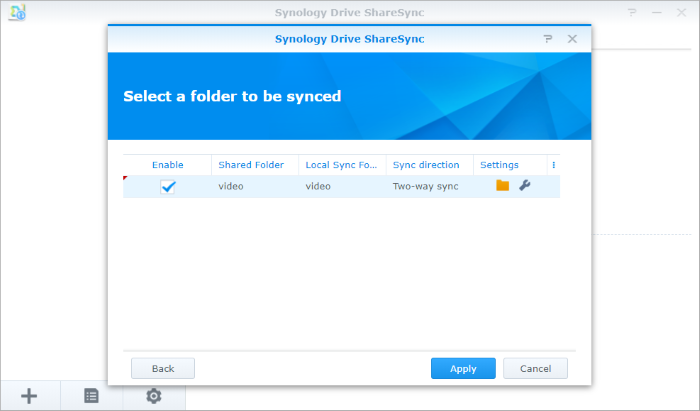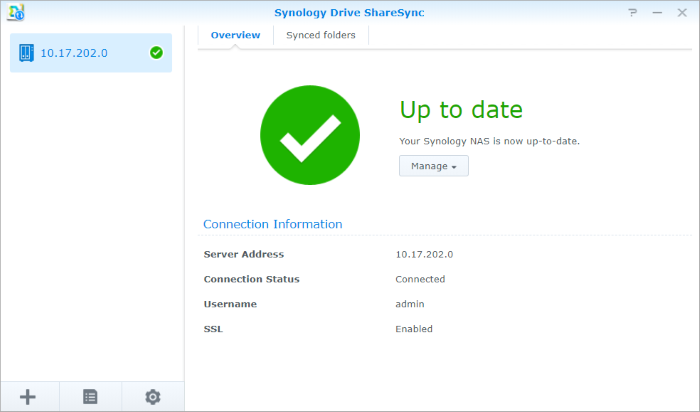How to Create NAS Mirror Backup to Sync Files to Another NAS
What is NAS mirror backup
A mirror backup, also known as an identical copy, refers to creating a backup of data that is an exact replica of the source. A NAS mirror backup specifically involves creating this identical copy on another NAS device or storage device, typically achieved through file synchronization.
A mirror backup creates an exact replica of your files and folders, preserving the original structure and format, allowing you to access the backup directly, rather than having a separate image file for backup purposes. This provides a convenient and accessible backup solution.
A mirror backup requires more storage space than other methods, as it includes all data without compression. However, it offers real-time synchronization, ensuring that changes made to the source data are automatically reflected in the destination directory.
Practical applications of NAS mirror backup
In situations where maintaining a direct and intact copy of NAS data is essential, a NAS mirror backup is a smart choice. This approach offers several advantages, including:
In situations where multiple people need to collaborate on a project from different devices, a NAS mirror backup can be beneficial. This approach allows for:
To maintain information consistency and keep data identical on two NAS devices, a NAS mirror backup is a suitable solution. This approach involves:
• You want to give the data on NAS an extra insurance to prevent accidental data loss or corruption.
To avoid the hassle of manually copying and transferring files, you can sync your NAS device to another NAS device. This process, also known as NAS-to-NAS syncing, allows you to:
- What tools can be used to create NAS mirror backup
- To mirror your NAS device to another NAS or other devices using freeware, you can follow these steps:
- To sync data between Synology NAS devices using Synology Drive Server, follow these steps:
What tools can be used to create NAS mirror backup
To create NAS mirror backup, the first thing you should prepare is an effective tool that can sync data between NAS and even other storage devices.
If you are using Synology NAS and want to mirror it to another Synology, you could consider downloading specialized tools from Synology Download Center to do a Synology mirror backup, Synology Drive Server is an example. Similarly, you can use Hybrid Backup Sync to backup QNAP to QNAP.
If you're looking for a more powerful and flexible backup and sync solution that goes beyond brand-specific tools, Qiling Disk Master Standard is definitely worth considering. Here's what you can expect from this powerful program:
Besides, it is free to create a NAS mirror backup with Qiling Disk Master. The high compatibility allows you to sync NAS to NAS or many other devices with ease.
Now let me show you the detailed steps to sync files between two NAS.
Method 1. Mirror NAS to another NAS or other devices via freeware
Here are the detailed steps to sync files between two NAS using Qiling Disk Master Standard:
It allows you to synchronize files and folders to other locations including local disk, external hard drive, another computer on the network, NAS, removable USB flash drive and so on; it can be used combing with other practical features, such as schedule backup.
Download and install Qiling Disk Master to proceed.
Steps:
1. Here are the detailed steps to sync files between two NAS using Qiling Disk Master Standard:
File Sync: Auto sync any changes made to source NAS to target NAS in real time.
2. To differentiate your NAS mirror backup from other backups, it's essential to assign a unique task name. This will help you easily identify and manage your backups.
3. To mirror your NAS, you need to add the NAS share or device to the backup process. This will allow you to access and synchronize the files and folders on the NAS.
4. To complete the process of mirroring your NAS, you need to select the destination NAS where the mirrored data will be stored.
Schedule: To automate sync tasks, such as mirroring or backing up data, you can set up a schedule based on your preferences. This ensures that your data is regularly updated and synchronized with the target NAS.
5. Tap Proceed button to begin the sync. When it is done, click Finish to quit the interface.
If you want to manage the folders that are applied with File Sync, you can find the task in Home page and click its icon with three stripes to expand the menu.
Note: Every time you execute an existing sync task, the source directory will be compared with the last mirror backup, any changes and newly added files will be synchronized to the target directory, while the deleted files won't.
Method 2. Sync data between Synology NAS via Synology Drive Server
If you are using Synology NAS, you can install the latest DSM (DiskStation Manager) and download Synology Drive Server or Cloud Station from Download Center as an alternative, then run the tool on your host and client Synology NAS servers.
Take Synology Drive Server as an example. It is a centralized file sharing and syncing service that allows you to access the most updated files on multiple Synology NAS client devices. To do this seamlessly, one NAS device should be chosen as the host server, and the rest of the paired Synology NAS devices will act as client devices.
Steps:
1. To sync files between the centralized NAS server and the client Synology NAS devices, the first thing you should do is establishing connections - enter the IP address, username, and password of the host Synology NAS device.
2. Choose the remote and local shared folders that you want to sync, check Enable and click Apply button.
3. After completing the setup process, you will have a new connection listed in the sync tasks section. This connection represents the newly established synchronization relationship between the devices.
4. With the new NAS connection established, you can now proceed to create sync tasks. Alternatively, you can click the + button to add another new NAS, following the same setup process.
Notes:
- This method is specifically designed for Synology NAS devices that are running the latest DSM (DiskStation Manager) version. If your Synology NAS is not running the latest DSM, you will not be able to use this method.
- If you're experiencing issues connecting to your Synology NAS device, don't worry! You can refer to our comprehensive tutorial for step-by-step guidance on resolving this problem.
Conclusion
Compared to traditional backup methods, mirror backup offers unique characteristics and advantages that can significantly save you time and energy. When used effectively, mirror backup can be a game-changer for your data management and backup needs.
Creating a NAS mirror backup involves synchronizing data between two NAS devices. This process can be efficiently achieved using sync tools, and one of the most effective solutions is the File Sync feature of Qiling Disk Master Standard.
Qiling Disk Master Standard is more than just a NAS sync tool. Its capabilities extend far beyond synchronizing data between NAS devices, offering a range of features that cater to different needs.
Related Articles
- Create NAS to NAS Backup with Best Free Software
You can easily create Synology or QNAP NAS to NAS backup with 2 effective methods. To backup different NAS devices, try the best way below. - How to Backup Synology NAS to External USB Drive in Windows?
This article illustrates how to backup Synology DiskStation NAS data to USB drive incrementally and password protected with the help of Qiling Disk Master. - How to Sync Folder to Network Drive in Windows 7/8/10?
Syncing local folder to network drive automatically is one of the best ways to protect data in the long-term. For easy access, you can choose to make network files available offline. - How to Backup Windows 10 to Different NAS Devices for FREE?
With the popularization of NAS device, plenty of people choose to backup Windows to NAS. Learn how to backup Windows 10 PC to Synology, QNAP and other popular NAS easily from this page.
